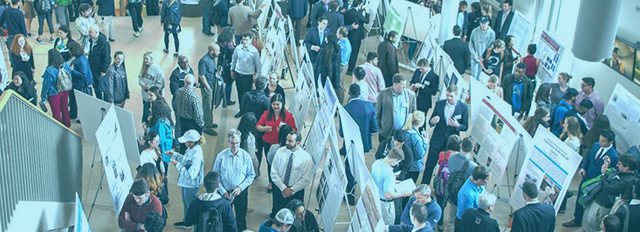
Posters and Papers
Document Type
Open Access
Faculty Sponsor
Chad Rogers
Department
Neuroscience
Start Date
22-5-2020 3:10 PM
Description
Speech recognition is the process by which humans seemingly effortlessly decode physical vibrations in the air into meaningful linguistic information. We do this by storing this linguistic information, or words, into a mental dictionary called the lexicon. As people grow older, and experience age-related hearing loss, the effort associated with the recognition of words is thought to increase (e.g., Rabbit, 1991; Suprenant, 2007), features of the lexicon may change with age. Using an auditory version of the lexical decision task (ADLT, Luce & Pisoni, 1998), Goh, Suarez, Yap, and Hui Tan (2009) found in young adults that phonological neighborhood density (how many words sound akin to a given word) and word frequency (how often a word is used in its given language) contribute significantly and interact with how quickly a word is aurally recognized. Specifically, they found that words more frequent in the English language were recognized more quickly than low frequency words. Their results also revealed an interaction where word frequency effects were larger for words from sparse rather than dense phonological neighborhoods. In the current study we aimed to replicate the findings of Goh et al (2009) and examine whether they would extend to a sample of older adults experiencing hearing loss. Participants (ages 18-78) were split into two age groups: young and older adults. The participants completed the ADLT using the same set of words provided by Goh et al. (2008). Our results replicated effects of word frequency but not neighborhood density. Older adults were slower than young adults as expected (e.g., Salthouse, 1991), but no interactions between age and lexical variables persisted after converting reaction times to z-scores (Faust, Balota, Spieler, & Ferraro, 1999). Distributional analyses that estimated ex-Gaussian parameters at the individual subject level revealed a similar pattern. We hold these results suggest a relative preservation of the structure of the lexicon in older adults, even in the face of hearing loss, but also point to the potential fragility of neighborhood density effects on ALDT.
Does the Structure of the Lexicon Change with Age?
Speech recognition is the process by which humans seemingly effortlessly decode physical vibrations in the air into meaningful linguistic information. We do this by storing this linguistic information, or words, into a mental dictionary called the lexicon. As people grow older, and experience age-related hearing loss, the effort associated with the recognition of words is thought to increase (e.g., Rabbit, 1991; Suprenant, 2007), features of the lexicon may change with age. Using an auditory version of the lexical decision task (ADLT, Luce & Pisoni, 1998), Goh, Suarez, Yap, and Hui Tan (2009) found in young adults that phonological neighborhood density (how many words sound akin to a given word) and word frequency (how often a word is used in its given language) contribute significantly and interact with how quickly a word is aurally recognized. Specifically, they found that words more frequent in the English language were recognized more quickly than low frequency words. Their results also revealed an interaction where word frequency effects were larger for words from sparse rather than dense phonological neighborhoods. In the current study we aimed to replicate the findings of Goh et al (2009) and examine whether they would extend to a sample of older adults experiencing hearing loss. Participants (ages 18-78) were split into two age groups: young and older adults. The participants completed the ADLT using the same set of words provided by Goh et al. (2008). Our results replicated effects of word frequency but not neighborhood density. Older adults were slower than young adults as expected (e.g., Salthouse, 1991), but no interactions between age and lexical variables persisted after converting reaction times to z-scores (Faust, Balota, Spieler, & Ferraro, 1999). Distributional analyses that estimated ex-Gaussian parameters at the individual subject level revealed a similar pattern. We hold these results suggest a relative preservation of the structure of the lexicon in older adults, even in the face of hearing loss, but also point to the potential fragility of neighborhood density effects on ALDT.


